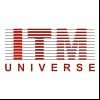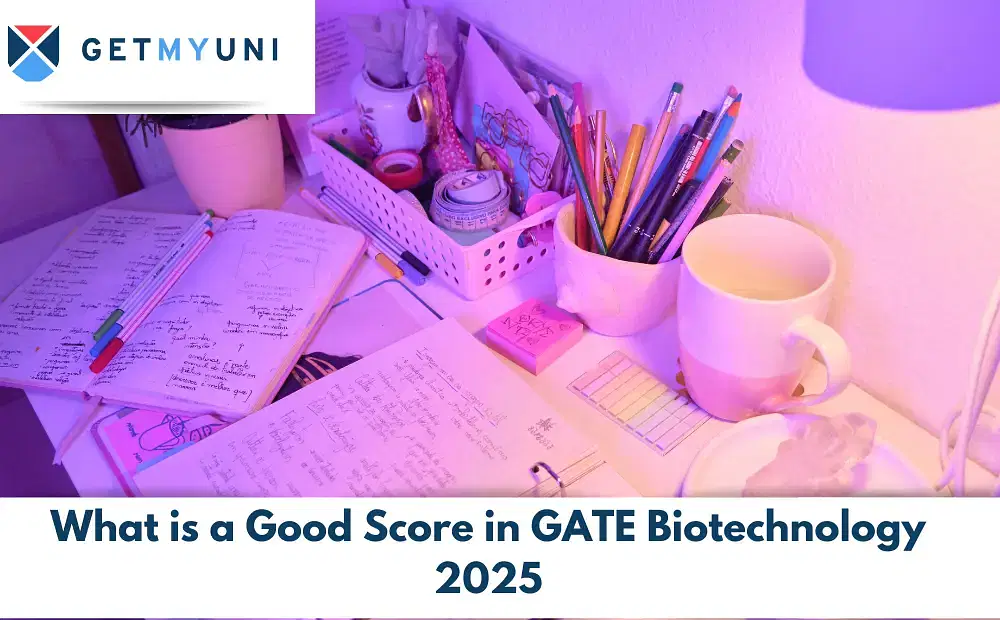GATE Textile Engineering and Fibre Science syllabus 2025 comprises Yarn manufacture, Fabric manufacture, Textile Testing, Chemical processing, Textile Fibres, and more such topics. Understanding of the GATE syllabus 2025 and exam pattern plays a crucial role in the exam preparation and strategy
GATE Textile Engineering and Fibre Science Syllabus includes topics from Engineering Mathematics, General Aptitude and topics from the core subject Textile Engineering and Fibre Science. The GATE examination is held for admissions to postgraduate engineering programmes and securing jobs in the Public Sector Companies. The students can use the syllabus to prepare for the GATE 2025 exam and score high marks to get into their desired college.
GATE Textile Engineering and Fibre Science Syllabus
The GATE Textile Engineering and Fibre Science syllabus topics must be thoroughly prepared by the candidates who are appearing for the GATE 2025 examination.
The core subject Textile Engineering and Fibre Science of the GATE Syllabus account for 72% of the question paper weightage whereas Engineering Mathematics and General Aptitude constitute 13% and 15% respectively.
Textile Fibres
- Classification of textile fibres.
- Essential requirements of fibre forming polymers.
- Gross and fine structures of natural fibres like cotton, wool, silk.
- Introduction to bast fibres.
- Properties and uses of natural and man-madefibres including carbon, aramid and ultra-high molecular weight polyethylene fibres.
- Physical and chemical methods of fibre and blend identification and blend analysis.
- Molecular architecture, amorphous and crystalline phases, glass transition, plasticization, crystallisation, melting, factors affecting Tg and Tm.
- Polymerization of nylon-6, nylon-66, poly (ethylene terephthalate), polyacrylonitrile and polypropylene.
- Melt spinning processes for PET, polyamide and polypropylene; Preparation of spinning dope.
- Principles of wet spinning, dry spinning, dry-jet-wet spinning and gel spinning.
- Spinning of acrylic, viscose and other regenerated cellulosic fibres such as polynosic and lyocell.
- Post spinning operations such as drawing, heat setting, tow-to-top conversion;Spin finish composition and applications.
- Different texturing methods.Methods of investigating fibre structure such as density, x-ray diffraction, birefringence, optical and electron microscopy such as SEM and TEM, I.R. spectroscopy, thermal methods such as DSC, DMA, TMA and TGA.
- Structure and morphology of man-made fibres; Mechanical properties of fibres.
- Moisture sorption of fibres; Fibre structure-property correlation.
Yarn Manufacture
- Yarn structure, and Properties.
- Principles of ginning.
- Principles of opening, cleaning and blending.
- Working principles of modern blow room machines.
- Fundamentals of carding; Conventional vs. modern carding machine.
- Card setting; Card clothing; Periodic mass variation in card sliver.
- Card autoleveller; Principles of roller drawing.
- Roller arrangements in drafting systems.
- Periodic mass variation in drawn sliver.
- Drawframe Autoleveller.
- Principles of cotton combing.
- Combing cycle and mechanisms.
- Recent developments in combing machine.
- Principles of drafting, twisting, and bobbin building in roving formation.
- Modern developments in roving machine.
- Principles of drafting, twisting and cop building in ring spinning.
- Causes of end breakages.
- Modern developments in ring spinning machine.
- Working principles of ring doubler and two-for-one twister.
- Relationship between single yarn twist and folded yarn twist.
- Principles of compact, rotor, air-jet, air-vortex, friction, core, wrap and twist-less spinning processes.
- Influence of fibre geometry, fibre configuration and fibre orientation in yarn;.
- Fibre packing density of yarn; Yarn diameter.
- Yarn twist and its relation to yarn strength.
- Helical arrangement of fibres in yarns.
- Yarn contraction.
- Fibre migration in yarns.
- Stress-strain relation in yarn.
- Mass irregularity of yarn.
- Structure-property relationship in ring, compact, rotor, air-jet and friction spun yarns.
Also Check: GATE Engineering Sciences Syllabus 2025
Fabric Manufacture
- Structure, and Properties.
- Principles of winding processes.
- Classification of winding methods.
- Patterning mechanism.
- Yarn clearers and tensioners.
- Different systems of yarn splicing.
- Warping objectives and classification.
- Different types of warping creels.
- Features of beam and sectional warping machines.
- Different sizing systems.
- Sizing of spun and filament yarns.
- Drawing-in process.
- Principles of pirn winding.
- Primary and secondary motions of loom.
- Shedding motion.
- Positive and negative shedding mechanisms.
- Type of sheds.
- Tappet, dobby and jacquard shedding.
- Weft insertion.
- Mechanics of weft insertion with shuttle.
- Shuttle picking and checking.
- Beat-up; Kinematics of sley.
- Loom timing diagram.
- Cam designing.
- Effect of sley setting and cam profile on fabric formation.
- Take-up and Let-off motions.
- Warp and weft stop motions.
- Warp protection.
- Weft replenishment.
- Principles of weft insertion systems of shuttleless weaving machines such as projectile, rapier, water-jet and air-jet.
- Principles of functioning of multiphase and circular looms.
- Types of selvedges.Basic woven fabric constructions and their derivatives.
- Crepe, cord, terry, gauze, leno and double cloth constructions.
- Drawing and lifting plans.Fundamentals of weft knitting.
- Classification of weft knitting technologies.
- Weft knitted constructions such as plain, rib, interlock and purl.
- Different knit stitches such as loop, tuck and float.
- Principle of warp knitting.
- Classification of warp knitting technologies.
- Swinging and shogging motion of guide bar.
- Basic warp knit construction such as pillar, tricot, atlas, inlay and nets.
- Fibre preparation processes for nonwovens.
- Web formation and bonding processes.
- Spun-bonding and melt- blowing technologies.
- Applications of nonwoven fabrics.Principles of braiding.
- Type of braids.
- Maypole braiding technology.
- Peirce’s equations for plain woven fabric geometry.
- Elastic Model of plain-woven fabric.
- Thickness, cover and maximum set of woven fabrics.
- Geometry of plain weft knitted loop.
- Munden’s constants and tightness factor for plain weft knitted fabrics.
- Geometry of tubular braids.
Also Check: GATE Geomatics Engineering Syllabus 2025
Textile Testing
- Sampling techniques for fibres, yarns and fabrics.
- Sample size and sampling errors.
- Moisture in textiles.
- Fibre length, fineness, crimp, maturity and trash content.
- Tensile testing of fibres.
- High volume fibre testing.
- Linear density of silver, roving and yarn.
- Twist and hairiness of yarn.
- Tensile testing of yarns.
- Evenness testing.
- Fault measurement and analysis of yarns.
- Fabric thickness, compressibility, stiffness, shear, drape, crease recovery, tear strength, bursting strength, pilling and abrasion resistance.
- Tensile testing of fabrics.
- Objective evaluation of low stress mechanical characteristics.
- Air permeability.
- Wetting and wicking.
- Water-vapour transmission through fabrics.
- Thermal resistance of fabrics.
Chemical Processing
- Impurities in natural fibre.
- Singeing; Chemistry and practice of preparatory processes for cotton.
- Preparatory processing of wool and silk.
- Mercerization of cotton.
- Preparatory processes for manmade fibres and their blends.
- Optical brightening agent.
- Classification of dyes.
- Dyeing of cotton, wool, silk, polyester, nylon and acrylic with appropriate classes of dyes.
- Dyeing of polyester/cotton and polyester/wool blends.
- Dyeing machines.
- Dyeing processes and machines for cotton knitted fabrics.
- Dye-fibre interaction;Introduction to thermodynamics and kinetics of dyeing.
- Brief idea about the relation between colour and chemical constitution.
- Beer-Lambert’s law.
- Kubelka-Munk theory and its application in colour measurement.
- Methods for determination of wash, light and rubbing fastness.
- Methods of printing such as roller printing and screen printing.
- Preparation of printing paste.
- Various types of thickeners.
- Printing auxiliaries.
- Direct styles of printing of (i) cotton with reactive dyes, (ii) wool, silk, nylon with acid and metal complex dyes, (iii) polyester with disperse dyes.
- Resist and discharge printing of cotton, silk and polyester.
- Pigment printing.
- Transfer printing of polyester.
- Inkjet printing; Printing faults.
- Mechanical finishing of cotton.
- Stiff, soft, wrinkle resistant, water repellent, flame retardant and enzyme (bio- polishing) finishing of cotton.
- Milling, decatizing and shrink resistant finishing of wool.
- Antistatic and soil release finishing.
- Heat setting of synthetic fabrics.
- Minimum application techniques.
- Pollution control and treatment of effluents.
Also Check: GATE Architecture and Planning (AR) Syllabus 2025
| Topics | Sub Topics |
| Linear Algebra | Matrices and Determinants, Systems of linear equations, Eigenvalues and eigenvectors. |
| Vector Calculus | Gradient; Divergence and Curl; Line; surface and volume integrals; Stokes, Gauss and Green’s theorems. |
| Calculus | Limit, continuity and differentiability; Partial Derivatives; Maxima and minima; Sequences and series; Test for convergence; Fourier series. |
| Differential Equations | Linear and non-linear first order ODEs; Higher order linear ODEs with constant coefficients; Cauchy’s and Euler’s equations; Laplace transforms; PDEs –Laplace, heat and wave equations. |
| Probability and Statistics | Mean, median, mode and standard deviation; Random variables; Poisson, normal and binomial distributions; Correlation and regression analysis. |
| Numerical Methods | Solutions of linear and nonlinear algebraic equations; integration of trapezoidal and Simpson’s rule; single and multi-step methods for differential equations. |
Also Check: GATE Engineering Sciences Syllabus 2025
GATE General Aptitude Syllabus
The students can check out the GATE general aptitude syllabus from the pointers below.
Verbal Ability
- English grammar
- Sentence completion, Instructions
- Verbal analogies, Word groups
- Critical reasoning, Verbal deduction.
Numerical Ability
- Numerical computation
- Numerical reasoning
- Numerical estimation
- Data interpretation.
Exam Pattern of GATE Textile Engineering and Fibre Science
The GATE exam pattern 2025 for Textile Engineering and Fibre Science paper is tabulated below. The exam pattern includes both MCQ and NAT questions.
| Particulars | Details |
| Exam Mode | Online, Computer Based Test (CBT) |
| Duration | 3 hours |
| Total Questions | 65 |
| Total Marks | 100 |
| Types of Questions | Multiple Choice Questions |
| Numerical Answer Type (NAT) Questions | |
| Sections | General Aptitude |
| Subject-based | |
| Marking Scheme | MCQ - Negative marking; 1/3 for 1 mark questions, 2/3 for 2 marks questions |
| NAT/MSQ - No negative marking |
Also Check: What is a Good GATE Score 2025?
Books for GATE Textile Engineering and Fibre Science Preparation
The best GATE books for both Engineering Mathematics and core subject Textile Engineering and Fibre Science syllabus topics preparation are given below.
Engineering Mathematics
The students can check the Engineering Mathematics books and authors given for reference.
| Book Name | Author |
| Higher Engineering Mathematics | B.S. Grewal |
| A Textbook of Engineering Mathematics | N P Bali and Dr. Manish Goyal |
| Engineering Mathematics | Sastry S.S |
| Mathematical Methods for Scientists & Engineers | Donald A. McQuarrie |
Textile Engineering and Fibre Science
The students can check the Textile engineering and Fibre science books and authors given for reference.
| Book Name | Author |
| Advanced Engineering Mathematics | Erwin Kreyszig |
| Developments in Science and Technology | Kalpana Rajaram |
| Textile Processing and Properties | Vigo TL Vigo Vigo |
Also Check: GATE Mining Engineering Syllabus 2025























